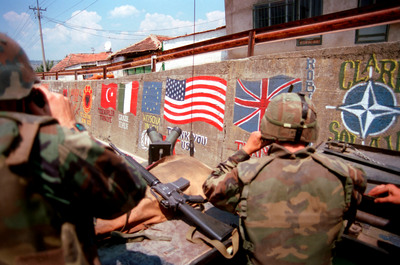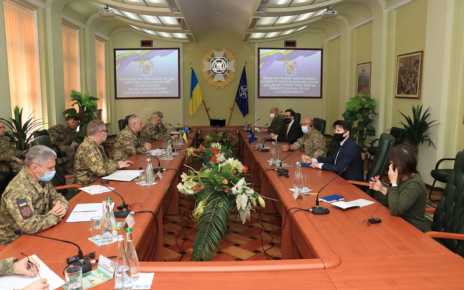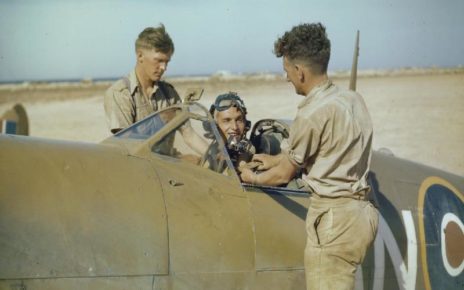When the Treaty of Brussels was signed on August 25, 1948, the world was, geopolitically speaking, a strikingly different place. Just three years prior, Germany had signed its unconditional surrender, officially ending a war that left upwards of 60 million killed.
When informed by advisors that Soviet forces were a day’s march from Berlin, Hitler opted to forgo his planned extraction to the Bavarian Alps, electing instead to take his own life; in doing so the Third Reich collapsed as quickly as it was born. Twice in the span of a mere thirty years, the world had endured terror, suffering, and human carnage on a scale never before seen. But the demise of Nazi Germany was accompanied by the rise of the Soviet Union and the division of the world into the competing spheres of influence of the two remaining superpowers – the USSR and the USA.
It was out of these turbulent times that the North Atlantic Treaty Organization (NATO) was born. Seventy years ago, at the North Atlantic Treaty’s official signing, American President Harry Truman addressed the crowd: “Men with courage and vision can still determine their own destiny. They can choose slavery or freedom, war or peace. I have no doubt which they will choose. The treaty we are signing here today is evidence of the path they will follow. If there is anything certain today, if there is anything inevitable in the future, it is the will of the people of the world for freedom and for peace.” With those words, Truman, a decorated veteran himself, christened the most successful military alliance in history.
In this otherwise muddled post-war period, NATO’s mandate was clear as day. The organization’s first Secretary General Lord Ismay described the alliances’ goal as follows: to “keep the Soviet Union out, the Americans in, and the Germans down”. To ensure that this cornerstone was upheld, the original member-states, then a ragtag group of ravaged post-war nations, agreed that “an armed attack against one or more of them…shall be considered an attack against them all”; what we recognize today as NATO’s famed Article 5.
In recent years, NATO has been forced, however reluctantly, to evolve. Following the collapse of the Berlin Wall in 1991, and the subsequent disintegration of the Soviet Bloc, NATO redefined itself within the confines of the current world order. As a counterweight to the Warsaw Pact for over 30 years, its primary function was to strengthen, unify, and prepare for any possible Soviet offensive. But with that threat extinguished, it has been forced to rethink its role within the current rules-based international order.
As one can imagine, this historic transition has been the focus of various academic investigations. From Dr. Seth Allen Johnston’s How NATO Adapts and Gulnur Aybet’s NATO, In Search of a Vision, to Professor Timothy Sayle’s Enduring Alliance: A History of NATO and the Postwar Global Order, various scholars and pundits have attempted to answer the question of how, and if, the great military alliance can endure the test of time. While a recent New York Times Editorial entitled Why NATO Matters makes the case in favour of the storied alliance, some aren’t so certain. “The justification for NATO was [that] its protecting the West from the Russian hordes. The Russian hordes are gone. What happens to NATO? It should have gone as well,” argues Noam Chomsky. A recent Boston Globe op-ed written by Stephen Kinzer entitled Is NATO Necessary? goes even further, announcing that “We need less NATO. Not more.” Kinzer concludes, ominously, that NATO’s troubled role today is that of an “instrument in escalating our dangerous conflict with Russia.”
NATO’s extensive involvement both in the North Atlantic region and beyond would point to the fact that it is needed now more than ever; a reality predicated on recent Russian expansionist tendencies, an increasingly outward-looking China, the rise of nationalist populism in Europe and beyond, a progressively antagonistic Iran, and a multitude of other burgeoning and established security threats. In the 21st century, NATO has remarketed itself as an “active and leading contributor to peace and security on the international stage. It promotes democratic values and is committed to the peaceful resolution of disputes.” But what differentiates the alliance from other transnational organizations, is the fact that “if diplomatic efforts fail, it has the military capacity to undertake crisis management operations alone or in cooperation with other countries and international organizations.”
Here’s to another 70 years.
Featured Image: U.S. Marines from the 2nd Light Armored Reconnaissance Battalion pass flags of the NATO nations and messages of thanks painted on the retaining wall of a road in a village in Kosovo (1999), by J. Shell via the U.S. Department of Defense. Public Domain.
Disclaimer: Any views or opinions expressed in articles are solely those of the authors and do not necessarily represent the views of the NATO Association of Canada.




